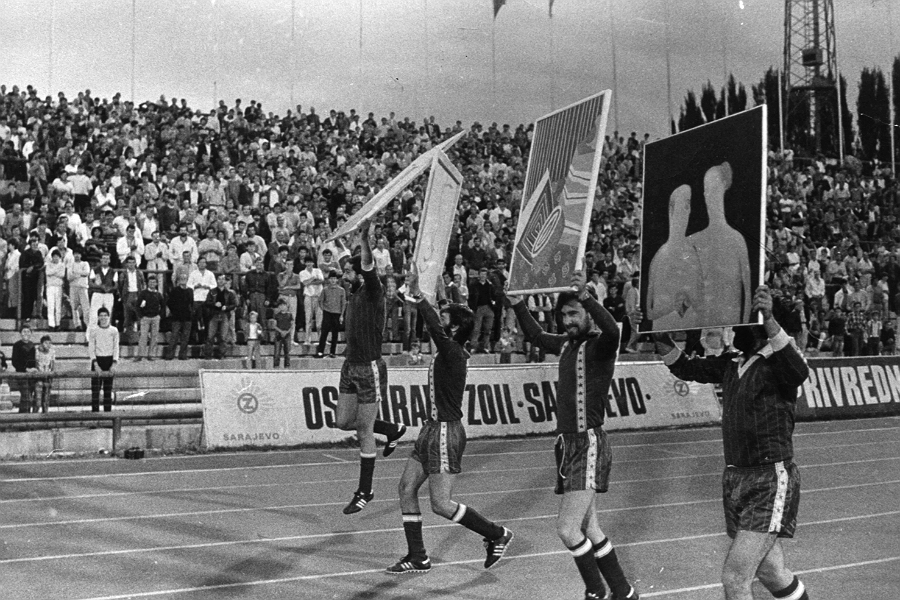Art Turning Left — Previewed

A new exhibition at Tate Liverpool seeks to identify links between art and left-wing ideas, finds Fred Johnson…
There is a long-enduring image in popular culture and political satire of the liberal leftie as an artsy, college-educated beret-owner, proudly bearing a BA and wearing at least four items of clothing emblazoned with Che Guevara’s face.
While this presentation is undoubtedly (largely) false, and more than a little guilty of generalisation on the side of insulting, there is arguably a far greater historical and cultural link between left-wing politics and art than is typical of other political persuasions.
It is perhaps fair to say that the artistic among us tend to be the more liberal, although this is certainly not always the case; you don’t have to look far to find great poets, writers, and artists with more right-wing sympathies.
![P78788 Guerrilla Girls - [no title] 1985-90](http://www.thedoublenegative.co.uk/blog/wp-content/uploads/2013/11/P78788-Guerrilla-Girls-no-title-1985-90-300x196.jpg)
It’s seemingly straightforward to analyse the apparent symbiosis that exists between left-wing politics and artistic expression; liberal politics does after all find its foundations in the somewhat romanticised concepts of freedom, equality, and acceptance. These are easy notions to stand behind, and it’s easy to see how they can inspire artistic fervour.
Art Turning Left: How Values Changed Making 1789-2013, opening this week at Tate Liverpool, seeks to explore the effects of respective sociopolitical climates on various artists from different periods and countries, and to identify direct influences.
As a thematic event, Art Turning Left will not focus on a specific time or place, but will rather seek to answer questions regarding how ideas such as collectivism, equality, and alternative economy have affected the creation, reception, and distribution of various artistic pieces since the French revolution, which the exhibition marks as the first example of left-wing politics directly affecting art.
“Art must be for all,” a subtitle reads, and this serves as an excellent reminder of such influences; while a cynic may claim that the reason left-wing politics and art go so readily together is because being an artist so often means being on the cusp of poverty, there must surely be more to it; after all, art should reflect a culture, and a culture is made up of its every constituent.
The exhibition will feature art of many different mediums, with a special focus on the social experiments of Palle Nielsen — indeed, an entire co-exhibition brings together the largest collection of documents, footage, artefacts, press memorabilia, and recordings from his famous Utopian piece The Model: a Model for Qualitative Society.
In this piece, Nielsen redeveloped a Stockholm exhibition space into a playground for children in 1968 over a period of three weeks. He worked alongside leftist protest organisation Aktion Samtal who had a history of building illegal playgrounds as a form of political protest. This, alongside Art Turning Left, helps highlight how political unrest can result in artistic expression and shape its form, public reception, and its distribution.
Even this momentous piece though is but a single example of a phenomenon more fully exposed within the exhibition. Artists such as David Medalla, Marianne Brandt, and William Morris represent their experiences alongside more historical pieces from Jacques-Louis David (the iconic painter of Republican France during the French revolution), which all contribute to the conclusion that while times may change, political principles and methods of artistic expression remain remarkably entwined.
Fred Johnson
Main image Zvono Group – Art and Soccer © ZVONO
Guerrilla Girls [no title] 1985-90 © courtesy www.guerrillagirls.com





